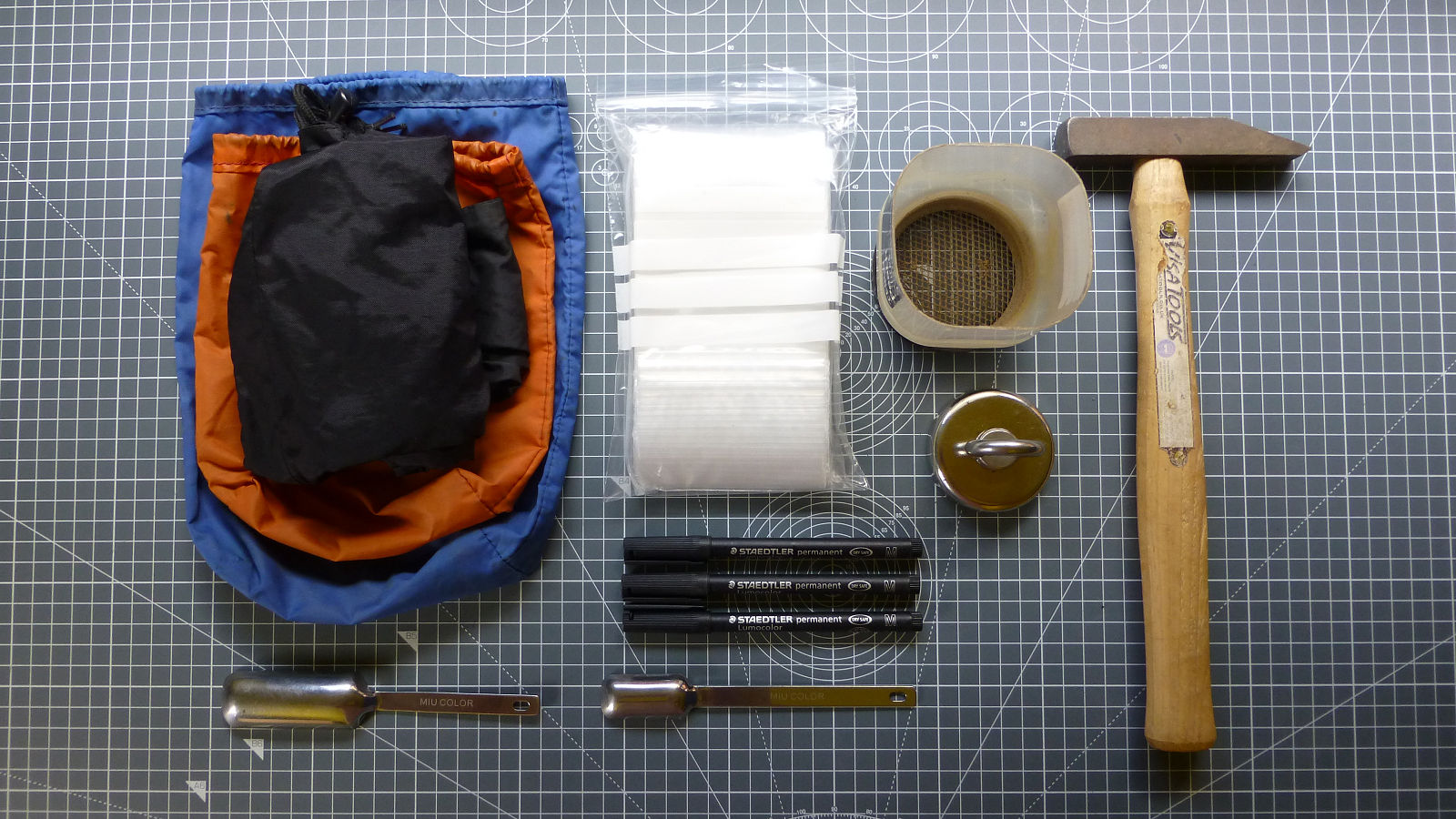Once you return home with your carefully gathered samples of sand, you need to prepare them a little before they are finally ready for storage or display. The first thing you need to consider is whether the samples need to be washed. Most samples collected dry, such as those from the tops of sand dunes in dry weather, will not usually need washing. However, sand collected from the foreshore, i.e. between the high and low tide line at the coast, and also along river banks, may be full of all manner of organic matter, both living and dead, that may decompose and create, shall we say, unpleasant odours.
To wash sand samples, I’ve found the easiest way is the place the sand into a shallow container and gentle flood water from the garden hose onto the sand. Organic materials will soon wash away. It’s best to do this outdoors and not at the kitchen sink, which will eventually become clogged with a hard cement-like substance. I generally avoid collecting samples that will need washing.
Next, all samples should be thoroughly dried before storage. There are many ways to do this but simply spreading the sample out in a flat bottomed tray will usually do the trick. A good tip is to use a bulldog clip to attach the labelled sampling bags to the tray to avoid mixing the samples up.
During the summer, I’ve found that leaving the samples in the garden shed will have them dry in a few days. However, if there’s room in the greenhouse, this can be accomplished in a few hours. During the colder months I tend to place them on top of the kitchen wall units which gets them dry within a few days or so.
One final task is really a matter of preference, that of sieving the sand to remove unwanted debris such as larger gravel, shells fragments and other matter. Some collectors prefer to leave their sand as collected. Personally, I like to sieve my samples before storage. To do this I’ve bought a set of three 300 mm diameter stainless steel sieves, of the type used by Bonsai growers to sieve their growing medium. They cost between £15.00 and £20.00
The set consists of 2 mm, 4 mm and 7 mm mesh sizes and the smallest 2 mm size is used. The idea is to keep the sample as close as possible to that collected and only remove the larger unwanted items. And that’s about it really, once washed and dried, a quantity of sand goes into the display containers while the remainder gets spread on the garden.
Copyright ©2020 Gary Buckham. All rights reserved.


